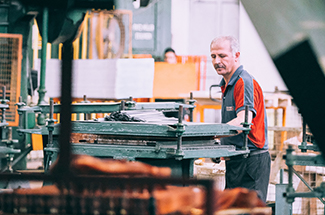Navigating Obstacles to Manufacturing Recovery
August 18, 2021

By Kirsten D. Champlin, CPA and Gregory A. Miller, CPA/PFS, CVA
Nearly 18 months after the COVID-19 pandemic sent the world economy into a tailspin, there are encouraging indicators of manufacturing recovery. Consumers are busy spending money once again, and manufacturers are scrambling to meet demand.
Even with a positive outlook, a constellation of challenges dominates the storyline for producers in the Rochester area and across the nation. Smart manufacturers have opened up their toolkits, and nothing is off the table in the quest to take advantage of opportunities presented by the recovery. Here’s a rundown of proven strategies, plus a reminder about one option – R&D tax credits – we know more producers could deploy.
#1. Attracting – and Securing – Staff
Like businesses across the economy, many manufacturers had to lay workers off last year. Bringing staff back – or finding new people – has been unexpectedly difficult, especially in light of still-high unemployment levels. Proactive businesses are leaving no stone unturned, finding ways to:
- Offer more flexible schedules. Flexibility should help potential workers who are still dealing with lack of childcare and uncertainty around school re-openings.
- Provide increased pay and sign-on incentives.
- Explore options to automate and evaluate how and where it fits their operation.
- Demonstrating an upgraded commitment to the safety and well-being of their workforce.
- Coordinate with local colleges to offer specific programs to train and develop the workers they need.
#2. Dealing with Supply Chain Disruption
With the forced slowdown of output during COVID, manufacturers experienced severe disruption to their supply chains and the problem continues. Businesses must now:
- Expand their supplier base beyond one or two suppliers to protect themselves from shortages.
- Reduce their reliance on foreign suppliers and seek out local options where they can build better relationships and expect faster turnaround.
- Build up inventory to protect against future shortages. Davie Kaplan can help address the cash flow challenges brought on by higher inventory, by modeling the cash impact and coordinating with the bank to fund the additional investment.
#3. Navigating High Commodity Prices
Sky-high commodity prices continue to complicate the path to manufacturing recovery. Whenever possible, forward-thinking businesses choose to:
- Place commodity orders in higher quantities to hedge against future price increases.
- Add specific commodity surcharges to customer orders to protect themselves from a big pricing hit.
#4. Taking Advantage of Available Tax Credits
Some manufacturers, especially if their business is growing, are in a good position to benefit from federal tax credits for research and development. These tax credits allow them a credit of up to 14% on labor and supplies consumed in the process of these qualifying activities: developing a new or improved product, testing new materials for use in manufacturing or finding new ways to improve a production process.
Manufacturers that design their own products, and those involved with the evaluation and testing of materials, could be good candidates for an R&D tax credit. In the Rochester area, players in the photonics industry come to mind.
Davie Kaplan can help you stay on the road to manufacturing recovery – whether it’s to provide a quick assessment about whether your business qualifies for an R&D tax credit, or model various options to respond to labor and supply shortages. Our expert team of CPAs and financial advisors has been serving families and businesses in the Rochester, NY area since 1934. We offer deep, industry-specific experience and a local touch, and we’re equipped to help clients of all sizes.

